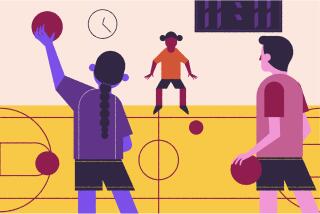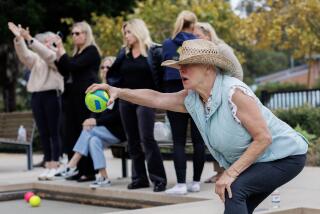‘Bowling’ to Unite L.A.
In his highly acclaimed survey of American civic life, Harvard University sociologist Robert Putnam painted a sobering portrait of isolationist trends in the latter 20th century. According to the 1995 study, participation was down categorically in everything from Lions Club meetings to religious services to dinner parties at the Joneses. People were doing things--bowling, for example--but not collectively.
Americans were “Bowling Alone”--as Putnam’s book is aptly titled--to the detriment of mind, body, spirit and democracy itself.
In modern-day Los Angeles, the neighborhood council is the metaphorical bowling league and, by contrast, sign-ups are running strong.
From the waterfront to the foothills, Angelenos are getting the ball rolling. There’s dynamism at the grassroots, and its impact can hardly be overstated at this defining moment in city and national history.
Created through the sweeping City Charter reform of 1999, neighborhood councils were designed to give ordinary people more information and influence regarding the municipal decisions that directly affect their neighborhoods.
Codified by Article IX of the charter, neighborhood councils are empowered through an “early notification system” to alert them in advance to relevant agenda items of the City Council, a City Council committee, a city board or a commission. The charter also calls for neighborhood councils to weigh in on the city budget.
Neighborhood councils have a mandate to reach out to the broadest diversity of local “stakeholders,” minimally defined as people who live, work or own property in the given jurisdiction.
The harbor area has generated much of the momentum around neighborhood councils. In the spring of 2000, local activists in Wilmington and San Pedro began a trail-blazing journey to bring neighborhood councils to life. Persevering through major growing pains at the community and citywide levels, harbor-area organizers made history last December when the Wilmington and coastal San Pedro neighborhood councils became the first two certified in the city.
Harbor area residents have high expectations of their councils. Local interest groups are lobbying the councils to vote on their issues.
The councils are building power and in the process, they are forging a solution to the central challenge posed by Putnam’s study: How do we identify and popularize new ways of connectivity that speak to real life in the present tense?
In academic terms, neighborhood councils can be a vehicle through which we “do with” instead of “doing for.” We can “bridge” differences of race/ethnicity/class/language/national origin/et al., as opposed to “bond” with birds of a feather.
Neighborhood councils can bring neighbors of diverse demographics together to exert newfound political power over the circumstances that intimately affect their collective well-being: campaigning side by side for the common good; breaking down the barriers; bowling together.
The prognosis for the city and the nation is brighter because of the civic-oriented teamwork inherent in neighborhood councils. Democracy is strengthened, its functionality increased.
The bowling league is trendy again.


